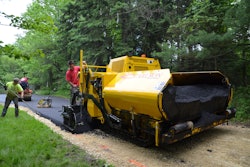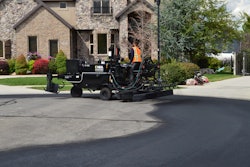Determining product safety is of great importance, which is why toxicology professionals conduct risk assessments to quantify potential threats of items we might encounter. In the case of RTS, scientists at Health Canada used the margin of exposure (MOE) method to measure the sealer’s relative risk versus several everyday items. The results speak for themselves.
How is this estimated? MOE measures genotoxic and carcinogenic substances using a ratio of two factors in any given population:
1. No-observed-adverse-effect level (NOAEL), or the highest dose of a substance that exhibits no harmful effects.
2. Predicted human exposure level, or the estimated dose likely to be exposed to the population.
The MOE method is widely used as a tool to translate risk into regulations. The European Food Safety Agency Scientific Committee asserts that an MOE of 10,000 or higher equals low concern from a public health standpoint and therefore a low priority for risk management actions. Putting this into perspective, a U.S. National Library of Medicine calculation values one liter of tap water at 20,000.
In 2016 Health Canada calculated an MOE for RTS that did not use data for RTS itself but used a worst-case scenario for exposure to compounds known as PAHs, which are commonly found in household dust. PAHs are also found in many different natural and man-made materials, including RTS. Although Health Canada incorrectly assumed that all the PAHs in the dust came from RTS, the study found the worst-case MOE value to be 15,500 — below levels of public health concern. Changing Health Canada’s worst-case assumptions to more likely scenarios, the same MOE calculation method results in an even lower risk MOE value of 105,000. The Pavement Coatings Technology Council (PCTC) believes that the evidence demonstrates that RTS is safe for use on paved surfaces.
The U.S. National Library of Medicine has calculated MOE values for many items people are commonly exposed to, such as wine (MOE = 20), coffee (500), cinnamon (4,000) and bacon (10,000). These lower values indicate higher risk to public health. From an MOE perspective, these popular products may pose more of a safety threat than the use of RTS.
When deciding to move forward with sealcoating, PCTC encourages property owners to base decisions on scientific findings. RTS is not only superior in strength compared to other sealers, but through MOE comparisons, we can conclude that the relative risk of RTS is no greater than items the majority of the world population consumes every day.











![Lee Boy Facility 2025 17 Use[16]](https://img.forconstructionpros.com/mindful/acbm/workspaces/default/uploads/2025/09/leeboy-facility-2025-17-use16.AbONDzEzbV.jpg?ar=16%3A9&auto=format%2Ccompress&fit=crop&h=135&q=70&w=240)








